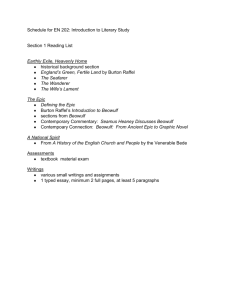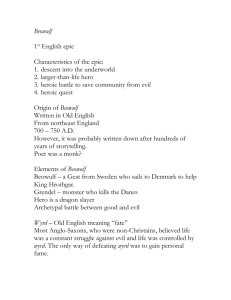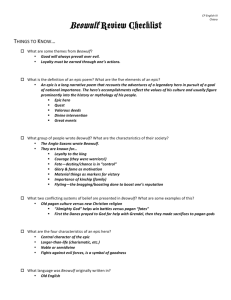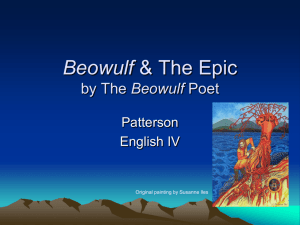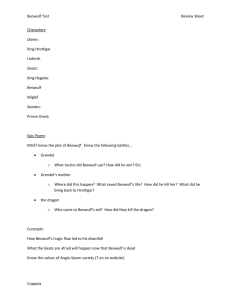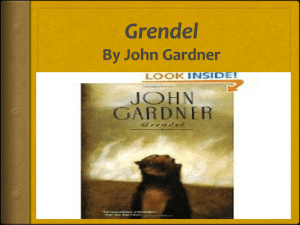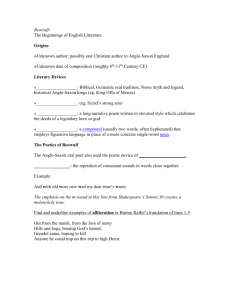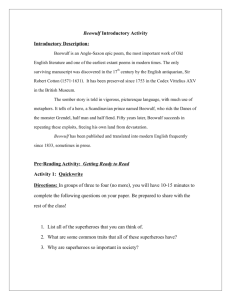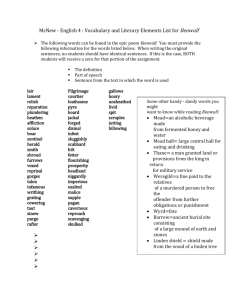Beowulf Intro PP
advertisement
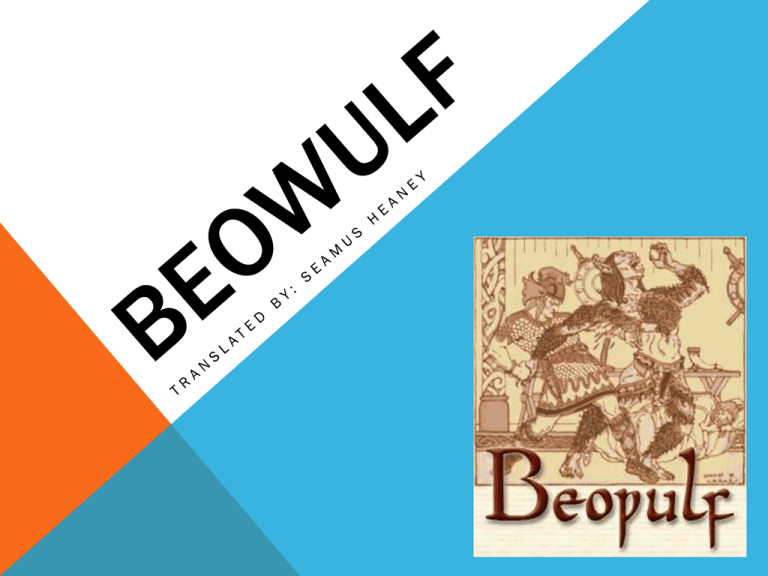
INTRODUCTION Beowulf is the first English literature masterpiece. Beowulf is an AngloSaxon epic poem that approximately dates to the year 700. Beowulf is written in an Anglo-Saxon language (also known as Old English). THE LANGUAGE The English language is divided in 3 periods: Old English (449-1100) Middle English (1100-1500) Modern English (1500-present) Beowulf is an example of Old English The Canterbury Tales is an example of Middle English Shakespeare’s works are an early form of Modern English. EPIC POETRY Epic poems are told in an elevated style and deal with deeds of a great hero. AND A HERO Courage and loyalty are key aspects of the hero. Warriors could be counted on to avenge the deaths of their lords, fathers, brothers and sons. THE SETTING Although the story is written in England, it tells the tale of the Geats and the Danes. The Geat kingdom is in present day Sweden, and the Dane kingdom present day Denmark. THE STORY Beowulf tells the story of the epic hero for whom it is named; he eventually becomes King of the Geats. Beowulf battles three figures throughout the story: The monster Grendel Grendel’s mother The dragon THE STORY CONTINUED The epic is divided into two sections Beowulf as a young warrior fighting Grendel and Grendel’s mother. 50 years later, Beowulf as the King fighting the dragon. THE MANUSCRIPT The only surviving manuscript is housed at the British Library in London. The original manuscript is over 3000 lines long and written in unrhymed, alliterative verse. OUR TRANSLATION Seamus Heaney is the Nobel Laureate author of our version of the text. Heaney focuses on lyrical phrasing rather than direct translation for a more easily spoken text. Features of the text include alliteration and poetic attention to phrasing.


